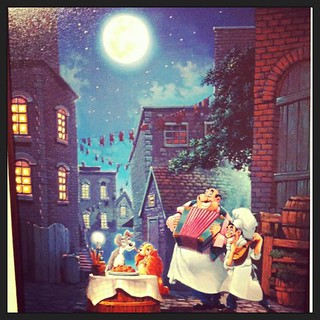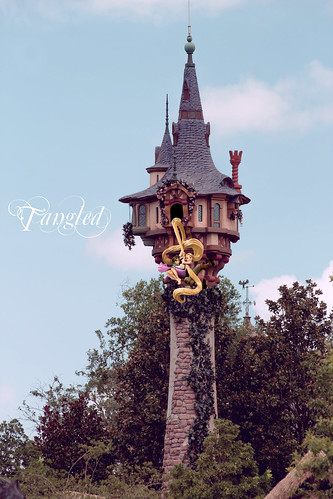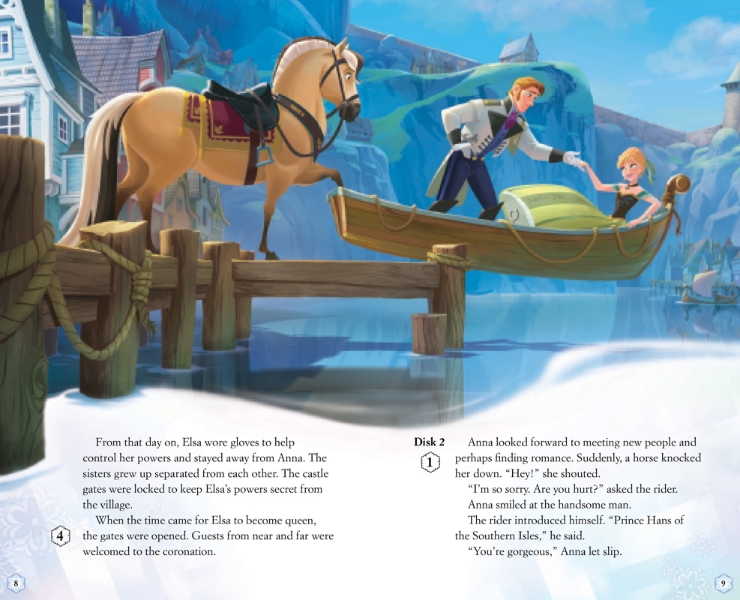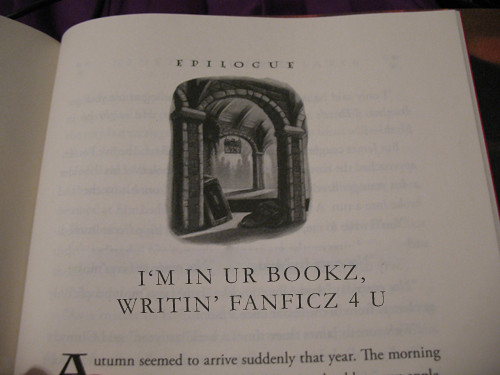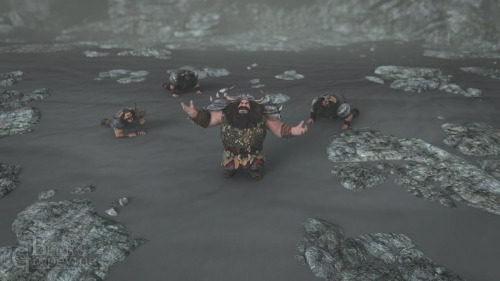Hello, all, and a happy late Valentine's. Here is a post on more Disney, and then I'll probably return to thoughts on OCs, or original characters.
Image source: http://farm3.staticflickr.com/2036/2406372163_b9b483b5a3.jpg
Matt Anderson for the holiday has written about the lost art of wooing and courtship, and the benefits of agreeing to take it slow with a potential, attractive partner. Merriam-Webster online defines courtship as "the activities that occur when people are developing a romantic relationship that could lead to marriage or the period of time when such activities occur". Avatar: The Last Airbender has poked fun with this definition, with Sokka suggesting to do "an activity" with a Northern Water tribe princess, much to her amusement.
Courtship was the transition activity between arranged marriages of the medieval ages and the 1920s flapper dates that plague The Great Gatsby. It has existed through the ages, to pave the way for true romance to occur between eligible partners, while avoiding social scandal.
The early Disney movies focus little on courtship; I admit that fact. In their defense, however, their source material ALSO had few instances courtship or interaction between male and female romantic leads. In the case of Mary Poppins and The Rescuers, the authors requested that the relationships remain platonic and thus they remained as such. I will argue that the courtship existed and extended as time went on and the animators were willing to explore how to make a relationship interesting and child-friendly onscreen, skipping over less obvious works like Fantasia, which featured a ballet courtship in "Pastoral Symphony" and "Dance of the Hours"; and animated features where the romantics leads do not end up together, like The Adventures of Ichabod and Mr. Toad, Pocahontas or Peter Pan. Wreck-It-Ralph I'm also not touching, because the film shares character information via flashbacks rather than by romantic
Image source: http://farm3.staticflickr.com/2143/2286528193_ed2fe2bc42.jpg
Consider Snow White and Sleeping Beauty, the first princess movies that later spouted a commercial merchandise line in the 1990s, as justifications for little courtship. Both fairy tales feature the titular characters marrying the first prince who wakes them from their enchanted comas, and the Disney versions actually improve on the creepy implications by having the princesses meet their love interests early on into the movies rather than hedge him into the ending scene at the last minute.
In lieu of a marriage contract or chaperoned outings, Disney movies display courtship with song and dance. Snow White's prince answers her prayer to have a loved one, for example, with a short but succinct "One Song" that makes an impression on her and the wicked queen. Snow White remains smitten for the whole movie, which ends up saving her life. Aurora and Prince Philip have their waltz to "Once Upon a Dream" and actually plan to meet later in the cottage. They would have had a proper date had the fairies not had to take Aurora to the palace for her sixteenth birthday and spindle curse, so one cannot blame the characters for marrying after Maleficent dies as a fiery dragon because they were willing to know the other. This tradition later carried on to Cinderella, which again had courtship restrained to a waltz and duet, as well as Robin Hood.
Image source: http://farm8.staticflickr.com/7295/8748710280_bfa0c1043e_n.jpg
Lady and the Tramp was the first Disney film to actually feature a "date," complete with romantic accordion music and the famous spaghetti kiss. The characters took time to get acquainted, and even consider running away from domestic England, but at the same time, the writers knew that one wondrous date does not guarantee true love. Both the titular characters have to prove genuine affection for the other after Lady accidentally ends up in the pound and learns of her date's flaws, to say the least. Tramp does so by rescuing a baby from a rat, at a personal risk, and Lady proves her love by saving Tramp from the dog catchers. This film comes from the 1950s, during the same time period as Sleeping Beauty, the other princess film mentioned earlier.
101 Dalmations features an instance of courtship AFTER a marriage, between Roger and Anita Radcliffe, that indicates how their premarital romance played out. The couple meets after falling into a pond together, thanks to a determined dog, and realizing they can laugh about their wet predicament; this instant revealed a mutual sense of humor and grace in response to a silly situation. We see the wedding soon after, but the film compensates by showing a marriage filled with similar, silly rapport.
Roger writes a song about his wife's old schoolmate, much to Anita's annoyed amusement, and dances with her in tune to the song. The few seconds, and the smile they share at the end shows benevolent chemistry and knowledge they have of the other. Roger knows that Anita cannot resist his silly nature, and she knows that he means no true harm. Pongo and Perdita, the married couple's Dalmation parents, also show affection and support for the other when rescuing their puppies from Cruella.
Beauty and the Beast and The Little Mermaid were the first Disney movies that tackled courtship and how the art relates to true love. Once again, both instances of courtship were taken from the source material-- the original little mermaid spent months living in her beloved prince's house before he married another, and Beauty stayed for at least a year with her Beast, only loving him when seeing him close to death.
The Little Mermaid features the second onscreen date for Disney, as well as the love interests taking time to know each other. After rescuing her from the beach and treating her as a palace guest, Eric shows his kingdom to Ariel, who cannot talk. She learns that Ariel loves dancing, carriage driving, and shopping in the kingdom marketplace and most importantly, he learns her name.
One fantastic day, however, does not guarantee a happy marriage. Ursula sets Ariel's terms knowing full well that true love cannot blossom in that time; she specifies that the "kiss of true love" has to happen, and gentlemanly Eric makes it clear early on in the film that he wants to love and marry a woman that he can respect. He becomes obsessed with the maiden who rescues him from drowning because she saved his life in the middle of a storm, which takes guts. Ariel without a voice or means to survive on land appears more as a damsel in distress than a figure of respect, and she earns that respect by showing her ability to drive a carriage with vigor, waltz gracefully, and make Eric laugh. He sees her at her craziest, learns her name, and realizes that he can try to love this mute girl even if he can never find the strange maiden who saved him from drowning. His attempt to kiss during their rowboat date, and then to talk to her later that night, reveals that true love has happened, much to Ursula's chagrin. Small wonder that she sabotages Ariel's chance for permanent humanity, and that Eric takes on the sea witch with a broken ship to rescue his mermaid. Actions matter more than love songs, since Eric doesn't even sing in the film, and he certainly takes action to fight for what he wants while remaining a gentleman.
Beauty and the Beast had a tongue-in cheek approach to the idea of courtship, thanks to Gaston. The town hero and most charming gentleman in town, Gaston plans "to woo and marry Belle," after winning every local lady's heart. To demonstrate his interest in her single status, he throws her books in the mud and imagines a future where she only serves as a child-bearer and a quiet wife. Belle pushes him in the mud in retaliation and shows no reciprocation of his obsession.
Image source: http://farm2.staticflickr.com/1422/1404643210_479c462a01_z.jpg
Gaston performs false courtship because he makes no effort to understand Belle better. We certainly know what Gaston wants out of a long-term relationship, and we also know that his good looks redeem his jerk qualities for the simpler village girls, but he cannot win Belle's heart with an abrasive approach. These actions contrast greatly with those of the Beast, who after saving Belle from the wolves bonds with her over a love of books and feeding birds. The Broadway adaptation carries Gaston's arrogance further with the song "Me" below; he attempts an awkward waltz with Belle that does not win her favor, for he doesn't ask about her desires or dreams.
The Beast, unlike Gaston, takes time to understand Belle's dreams and desires, satisfying them as best as he can. Although he fails in the first attempt, inviting her to dinner on her first night as a castle "prisoner" or "guest," he wins her trust by saving her from a pack of wolves and her affection by gifting her with an entire library. Even after this magnificent gift, and an elegant ballroom dance, however, true love doesn't occur for one reason: Belle is obligated to stay in the castle. When Beast releases her from that promise, thereby proving his desire for her happiness, Belle returns of her own free will to rescue him from the mob. Once again, the couple has to prove their love through their actions, done at a personal risk.
As American animation entered the 1990s, Disney realized that relationships needed to develop onscreen, to build plausibility. Aladdin and Jasmine have their magic carpet ride, for example, but also date in the television spinoff series; Tarzan and Jane spent months getting acquainted in the African jungle; Simba from The Lion King married his best friend from childhood; Phoebus and Esmeralda do not get married in Hunchback of Notre Dame but maintain a flirting rapport during the film. Even the lesser-known films such as Treasure Planet had romantic couples taking time onscreen to develop from awkward captain and navigator relationships.
With that, we then turn to Disney's return to serious animated film, The Princess and the Frog, in 2009. The trend when adapting fairy tales was to get rid of the "marry him with no character development" ending and make the romances more socially acceptable. Such a change becomes a narrative risk but for most of the films worked out in the long run.
For Princess and the Frog, the title characters do nothing but court each other or try to break the voodoo curse that has turned them into green amphibians. That said, the courting does not start intentionally; Tiana kisses the transformed Prince Naveen after he hints of financial recompense, thus turning into a frog as well. The two spend most of the night and next morning arguing about how to become human again, and only bond after fighting off frog-hunters and Dr. Facilier, the Shadow Man.
Personally, I feel that the courtship in Princess was very forced, in terms of showing how two different people learn to love each other. Instead of one kiss ending their problems, Naveen and Tiana have their flaws, and they spend the film overcoming them. Tiana teaches the prince how to mince mushrooms and pass on survival skills that he never learned, while he invites her to loosen up and share her dream with the people she loves. In addition, the swamp animals play music to accompany their waltz and local wise woman Mama Odie expresses that they both need love to become human again.
Image source: http://static1.wikia.nocookie.net/__cb20121008160127/disney/images/8/81/Ma_Belle_Evangeline.png
My pet peeve with this narrative is that Tiana already has loved ones in her life: her mother Eudora and best friend Charlotte. The song "Almost There" features Tiana singing about her dream to her mother. Charlotte also cheers when she can help Tiana reach her dream, by buying made-to-orders beignets in bulk and then later agreeing to fund her. The young waitress only loses sight of her values when kissing Naveen for money, while she is desperate after learning that another customer has bought the building she wanted. Also, she doesn't fight Dr. Facilier out of love for Naveen, but rather out of love for her father and what he valued. I would have felt more comfortable with this interpretation if Tiana's willingness to lose sight of her values was more pronounced, or if she and Naveen had not been portrayed as extreme polar opposites. While opposites do attract, the film compresses too much character development into two hours that would not happen in real life. There has to be a spark of attraction rather than a dose of people learning to overcome their flaws.
Tangled, unlike Princess and the Frog, features that spark of attraction, and much less character development to compress. Rapunzel and Flynn Rider, aka Eugene, are simpler characters because unlike the grown-up Tiana and Naveen, who have lived in the adult world for several years, they are young adults in need of a maturity spree. Their coming-of-age rings truer to the audience, because the emotions are more grounded in reality.
Image source: http://farm8.staticflickr.com/7339/9602960306_49f155b779.jpg
Keep in mind, Tangled makes huge changes to "Rapunzel," the original fairy tale, the biggest being the amount of time that Rapunzel spends getting to know her prince. She talks to him every day and ends up pregnant, before mother Gothel banishes her to the desert and blinds the prince. Disney, to make Rapunzel more of an active heroine and her love interest less of a playboy, decided to eliminate the unsavory parts of that courtship and rebuild the romance for the child-friendly film.
Tangled has a simpler story than Princess; Rapunzel wants to see the "floating lights" that shine on her birthday each year, and conscripts a rugged thief to escort her to and from her tower home, in exchange for a crown that he stole. Flynn Rider does all he can to get out of the escort job, first by guilting Rapunzel into returning home, and then taking her to a shifty pub called the Snuggly Duckling to show her how gritty the real world is. He shows a knack for lying and deception that backfires on him when the royal guards show up for the crown.
Note, however, that Flynn never intends to harm Rapunzel or leave her alone in the world; despite being a rogue, he also keeps her safe while attempting to receive his crown back. One could argue that he needs her alive to get the satchel back, but he intends to scare her straight with the Snuggly Duckling thugs and return to the tower without resorting to violence. He remains a shifty gentleman thief but never a dangerous one.
We see more potential for his character when he and Rapunzel nearly drown; a few minutes from death, he decides to let go of his thief guise and reveals his real name. This first instance of honesty ends up saving him, for Rapunzel reveals and realizes that her magical hair can help them find an exit. These mutual secrets and the near-death experience bring them closer during the campfire scene.
Image source: http://static1.wikia.nocookie.net/__cb20120507154711/disney/images/8/81/Campfire.jpg
Rapunzel, who has already impressed Flynn with her hair athletics and ability to wield a frying pan, shows respect for his real name and person by asking for his tale, and later expressing preference for "Eugene" over "Flynn". He in turn understands why she never left the tower. Flynn uncovers a vulnerable side to this thieving facade, talking about his admiration for a fictional hero who did whatever he wanted because he had enough money to not worry about anything. His desire for the crown rests in childlike fear of being alone, and at the world's mercy. Rapunzel, knowing what it's like to live in fear, gently coaxes him to accept himself without preaching to him about personal integrity. Without these characters having such a natural conversation after nearly dying, they would have remained good friends at best instead of potential romantic partners. They understand each other better, and Flynn develops a protective instinct for Rapunzel.
Last but not least is Frozen, an adaptation of "The Snow Queen," which mocks the classic Disney notions of true love. We have sisters Anna and Elsa, the latter as Anna's guardian and new Arendelle queen. Isolated from Elsa and friends for years, Anna craves true love and a partner. She finds a partner in Prince Hans of the Southern Isles and shares a duet with him.
Image source: http://www.rotoscopers.com/wp-content/gallery/frozen-storybook/frozen-storbook-movie-theatre-hans-anna-boat.jpg
I'm not going to spoil how things end with Hans and Anna, but Elsa as queen doesn't approve of the match. She says, "You can't marry someone you've just met" and establishes the engagement as a violation of royal decorum. Without several months of love letters, courtship, and negotiations with both families for a wedding, Hans and Anna do not take time to get to know each other, only learning that they finish each other's sandwiches and that they each are younger siblings. Kristoff, an ice farmer who helps Anna out, even mocks this point by asking Anna about Hans's show size. The writers were attempting to show how a Snow White or Sleeping Beauty scenario would play out in real life, if normal people educated the princesses about true love.
As I have argued above, however, quite a few animated Disney films have more than one date or romantic song guaranteeing true love; actions and knowledge matter more than voices that blend well on the soundtrack. In fact, Disney creates an ideal that the person a princess loves will fight for her to show his devotion, but will have to face ample stumbling blocks before earning the happy marriage or well-deserved kiss.
Image source: http://farm3.staticflickr.com/2036/2406372163_b9b483b5a3.jpg
Matt Anderson for the holiday has written about the lost art of wooing and courtship, and the benefits of agreeing to take it slow with a potential, attractive partner. Merriam-Webster online defines courtship as "the activities that occur when people are developing a romantic relationship that could lead to marriage or the period of time when such activities occur". Avatar: The Last Airbender has poked fun with this definition, with Sokka suggesting to do "an activity" with a Northern Water tribe princess, much to her amusement.
Courtship was the transition activity between arranged marriages of the medieval ages and the 1920s flapper dates that plague The Great Gatsby. It has existed through the ages, to pave the way for true romance to occur between eligible partners, while avoiding social scandal.
The early Disney movies focus little on courtship; I admit that fact. In their defense, however, their source material ALSO had few instances courtship or interaction between male and female romantic leads. In the case of Mary Poppins and The Rescuers, the authors requested that the relationships remain platonic and thus they remained as such. I will argue that the courtship existed and extended as time went on and the animators were willing to explore how to make a relationship interesting and child-friendly onscreen, skipping over less obvious works like Fantasia, which featured a ballet courtship in "Pastoral Symphony" and "Dance of the Hours"; and animated features where the romantics leads do not end up together, like The Adventures of Ichabod and Mr. Toad, Pocahontas or Peter Pan. Wreck-It-Ralph I'm also not touching, because the film shares character information via flashbacks rather than by romantic
Image source: http://farm3.staticflickr.com/2143/2286528193_ed2fe2bc42.jpg
Consider Snow White and Sleeping Beauty, the first princess movies that later spouted a commercial merchandise line in the 1990s, as justifications for little courtship. Both fairy tales feature the titular characters marrying the first prince who wakes them from their enchanted comas, and the Disney versions actually improve on the creepy implications by having the princesses meet their love interests early on into the movies rather than hedge him into the ending scene at the last minute.
In lieu of a marriage contract or chaperoned outings, Disney movies display courtship with song and dance. Snow White's prince answers her prayer to have a loved one, for example, with a short but succinct "One Song" that makes an impression on her and the wicked queen. Snow White remains smitten for the whole movie, which ends up saving her life. Aurora and Prince Philip have their waltz to "Once Upon a Dream" and actually plan to meet later in the cottage. They would have had a proper date had the fairies not had to take Aurora to the palace for her sixteenth birthday and spindle curse, so one cannot blame the characters for marrying after Maleficent dies as a fiery dragon because they were willing to know the other. This tradition later carried on to Cinderella, which again had courtship restrained to a waltz and duet, as well as Robin Hood.
Image source: http://farm8.staticflickr.com/7295/8748710280_bfa0c1043e_n.jpg
Lady and the Tramp was the first Disney film to actually feature a "date," complete with romantic accordion music and the famous spaghetti kiss. The characters took time to get acquainted, and even consider running away from domestic England, but at the same time, the writers knew that one wondrous date does not guarantee true love. Both the titular characters have to prove genuine affection for the other after Lady accidentally ends up in the pound and learns of her date's flaws, to say the least. Tramp does so by rescuing a baby from a rat, at a personal risk, and Lady proves her love by saving Tramp from the dog catchers. This film comes from the 1950s, during the same time period as Sleeping Beauty, the other princess film mentioned earlier.
101 Dalmations features an instance of courtship AFTER a marriage, between Roger and Anita Radcliffe, that indicates how their premarital romance played out. The couple meets after falling into a pond together, thanks to a determined dog, and realizing they can laugh about their wet predicament; this instant revealed a mutual sense of humor and grace in response to a silly situation. We see the wedding soon after, but the film compensates by showing a marriage filled with similar, silly rapport.
Roger writes a song about his wife's old schoolmate, much to Anita's annoyed amusement, and dances with her in tune to the song. The few seconds, and the smile they share at the end shows benevolent chemistry and knowledge they have of the other. Roger knows that Anita cannot resist his silly nature, and she knows that he means no true harm. Pongo and Perdita, the married couple's Dalmation parents, also show affection and support for the other when rescuing their puppies from Cruella.
Beauty and the Beast and The Little Mermaid were the first Disney movies that tackled courtship and how the art relates to true love. Once again, both instances of courtship were taken from the source material-- the original little mermaid spent months living in her beloved prince's house before he married another, and Beauty stayed for at least a year with her Beast, only loving him when seeing him close to death.
The Little Mermaid features the second onscreen date for Disney, as well as the love interests taking time to know each other. After rescuing her from the beach and treating her as a palace guest, Eric shows his kingdom to Ariel, who cannot talk. She learns that Ariel loves dancing, carriage driving, and shopping in the kingdom marketplace and most importantly, he learns her name.
One fantastic day, however, does not guarantee a happy marriage. Ursula sets Ariel's terms knowing full well that true love cannot blossom in that time; she specifies that the "kiss of true love" has to happen, and gentlemanly Eric makes it clear early on in the film that he wants to love and marry a woman that he can respect. He becomes obsessed with the maiden who rescues him from drowning because she saved his life in the middle of a storm, which takes guts. Ariel without a voice or means to survive on land appears more as a damsel in distress than a figure of respect, and she earns that respect by showing her ability to drive a carriage with vigor, waltz gracefully, and make Eric laugh. He sees her at her craziest, learns her name, and realizes that he can try to love this mute girl even if he can never find the strange maiden who saved him from drowning. His attempt to kiss during their rowboat date, and then to talk to her later that night, reveals that true love has happened, much to Ursula's chagrin. Small wonder that she sabotages Ariel's chance for permanent humanity, and that Eric takes on the sea witch with a broken ship to rescue his mermaid. Actions matter more than love songs, since Eric doesn't even sing in the film, and he certainly takes action to fight for what he wants while remaining a gentleman.
Beauty and the Beast had a tongue-in cheek approach to the idea of courtship, thanks to Gaston. The town hero and most charming gentleman in town, Gaston plans "to woo and marry Belle," after winning every local lady's heart. To demonstrate his interest in her single status, he throws her books in the mud and imagines a future where she only serves as a child-bearer and a quiet wife. Belle pushes him in the mud in retaliation and shows no reciprocation of his obsession.
Image source: http://farm2.staticflickr.com/1422/1404643210_479c462a01_z.jpg
Gaston performs false courtship because he makes no effort to understand Belle better. We certainly know what Gaston wants out of a long-term relationship, and we also know that his good looks redeem his jerk qualities for the simpler village girls, but he cannot win Belle's heart with an abrasive approach. These actions contrast greatly with those of the Beast, who after saving Belle from the wolves bonds with her over a love of books and feeding birds. The Broadway adaptation carries Gaston's arrogance further with the song "Me" below; he attempts an awkward waltz with Belle that does not win her favor, for he doesn't ask about her desires or dreams.
The Beast, unlike Gaston, takes time to understand Belle's dreams and desires, satisfying them as best as he can. Although he fails in the first attempt, inviting her to dinner on her first night as a castle "prisoner" or "guest," he wins her trust by saving her from a pack of wolves and her affection by gifting her with an entire library. Even after this magnificent gift, and an elegant ballroom dance, however, true love doesn't occur for one reason: Belle is obligated to stay in the castle. When Beast releases her from that promise, thereby proving his desire for her happiness, Belle returns of her own free will to rescue him from the mob. Once again, the couple has to prove their love through their actions, done at a personal risk.
As American animation entered the 1990s, Disney realized that relationships needed to develop onscreen, to build plausibility. Aladdin and Jasmine have their magic carpet ride, for example, but also date in the television spinoff series; Tarzan and Jane spent months getting acquainted in the African jungle; Simba from The Lion King married his best friend from childhood; Phoebus and Esmeralda do not get married in Hunchback of Notre Dame but maintain a flirting rapport during the film. Even the lesser-known films such as Treasure Planet had romantic couples taking time onscreen to develop from awkward captain and navigator relationships.
With that, we then turn to Disney's return to serious animated film, The Princess and the Frog, in 2009. The trend when adapting fairy tales was to get rid of the "marry him with no character development" ending and make the romances more socially acceptable. Such a change becomes a narrative risk but for most of the films worked out in the long run.
For Princess and the Frog, the title characters do nothing but court each other or try to break the voodoo curse that has turned them into green amphibians. That said, the courting does not start intentionally; Tiana kisses the transformed Prince Naveen after he hints of financial recompense, thus turning into a frog as well. The two spend most of the night and next morning arguing about how to become human again, and only bond after fighting off frog-hunters and Dr. Facilier, the Shadow Man.
Personally, I feel that the courtship in Princess was very forced, in terms of showing how two different people learn to love each other. Instead of one kiss ending their problems, Naveen and Tiana have their flaws, and they spend the film overcoming them. Tiana teaches the prince how to mince mushrooms and pass on survival skills that he never learned, while he invites her to loosen up and share her dream with the people she loves. In addition, the swamp animals play music to accompany their waltz and local wise woman Mama Odie expresses that they both need love to become human again.
Image source: http://static1.wikia.nocookie.net/__cb20121008160127/disney/images/8/81/Ma_Belle_Evangeline.png
My pet peeve with this narrative is that Tiana already has loved ones in her life: her mother Eudora and best friend Charlotte. The song "Almost There" features Tiana singing about her dream to her mother. Charlotte also cheers when she can help Tiana reach her dream, by buying made-to-orders beignets in bulk and then later agreeing to fund her. The young waitress only loses sight of her values when kissing Naveen for money, while she is desperate after learning that another customer has bought the building she wanted. Also, she doesn't fight Dr. Facilier out of love for Naveen, but rather out of love for her father and what he valued. I would have felt more comfortable with this interpretation if Tiana's willingness to lose sight of her values was more pronounced, or if she and Naveen had not been portrayed as extreme polar opposites. While opposites do attract, the film compresses too much character development into two hours that would not happen in real life. There has to be a spark of attraction rather than a dose of people learning to overcome their flaws.
Tangled, unlike Princess and the Frog, features that spark of attraction, and much less character development to compress. Rapunzel and Flynn Rider, aka Eugene, are simpler characters because unlike the grown-up Tiana and Naveen, who have lived in the adult world for several years, they are young adults in need of a maturity spree. Their coming-of-age rings truer to the audience, because the emotions are more grounded in reality.
Image source: http://farm8.staticflickr.com/7339/9602960306_49f155b779.jpg
Keep in mind, Tangled makes huge changes to "Rapunzel," the original fairy tale, the biggest being the amount of time that Rapunzel spends getting to know her prince. She talks to him every day and ends up pregnant, before mother Gothel banishes her to the desert and blinds the prince. Disney, to make Rapunzel more of an active heroine and her love interest less of a playboy, decided to eliminate the unsavory parts of that courtship and rebuild the romance for the child-friendly film.
Tangled has a simpler story than Princess; Rapunzel wants to see the "floating lights" that shine on her birthday each year, and conscripts a rugged thief to escort her to and from her tower home, in exchange for a crown that he stole. Flynn Rider does all he can to get out of the escort job, first by guilting Rapunzel into returning home, and then taking her to a shifty pub called the Snuggly Duckling to show her how gritty the real world is. He shows a knack for lying and deception that backfires on him when the royal guards show up for the crown.
Note, however, that Flynn never intends to harm Rapunzel or leave her alone in the world; despite being a rogue, he also keeps her safe while attempting to receive his crown back. One could argue that he needs her alive to get the satchel back, but he intends to scare her straight with the Snuggly Duckling thugs and return to the tower without resorting to violence. He remains a shifty gentleman thief but never a dangerous one.
We see more potential for his character when he and Rapunzel nearly drown; a few minutes from death, he decides to let go of his thief guise and reveals his real name. This first instance of honesty ends up saving him, for Rapunzel reveals and realizes that her magical hair can help them find an exit. These mutual secrets and the near-death experience bring them closer during the campfire scene.
Image source: http://static1.wikia.nocookie.net/__cb20120507154711/disney/images/8/81/Campfire.jpg
Rapunzel, who has already impressed Flynn with her hair athletics and ability to wield a frying pan, shows respect for his real name and person by asking for his tale, and later expressing preference for "Eugene" over "Flynn". He in turn understands why she never left the tower. Flynn uncovers a vulnerable side to this thieving facade, talking about his admiration for a fictional hero who did whatever he wanted because he had enough money to not worry about anything. His desire for the crown rests in childlike fear of being alone, and at the world's mercy. Rapunzel, knowing what it's like to live in fear, gently coaxes him to accept himself without preaching to him about personal integrity. Without these characters having such a natural conversation after nearly dying, they would have remained good friends at best instead of potential romantic partners. They understand each other better, and Flynn develops a protective instinct for Rapunzel.
Last but not least is Frozen, an adaptation of "The Snow Queen," which mocks the classic Disney notions of true love. We have sisters Anna and Elsa, the latter as Anna's guardian and new Arendelle queen. Isolated from Elsa and friends for years, Anna craves true love and a partner. She finds a partner in Prince Hans of the Southern Isles and shares a duet with him.
Image source: http://www.rotoscopers.com/wp-content/gallery/frozen-storybook/frozen-storbook-movie-theatre-hans-anna-boat.jpg
I'm not going to spoil how things end with Hans and Anna, but Elsa as queen doesn't approve of the match. She says, "You can't marry someone you've just met" and establishes the engagement as a violation of royal decorum. Without several months of love letters, courtship, and negotiations with both families for a wedding, Hans and Anna do not take time to get to know each other, only learning that they finish each other's sandwiches and that they each are younger siblings. Kristoff, an ice farmer who helps Anna out, even mocks this point by asking Anna about Hans's show size. The writers were attempting to show how a Snow White or Sleeping Beauty scenario would play out in real life, if normal people educated the princesses about true love.
As I have argued above, however, quite a few animated Disney films have more than one date or romantic song guaranteeing true love; actions and knowledge matter more than voices that blend well on the soundtrack. In fact, Disney creates an ideal that the person a princess loves will fight for her to show his devotion, but will have to face ample stumbling blocks before earning the happy marriage or well-deserved kiss.


